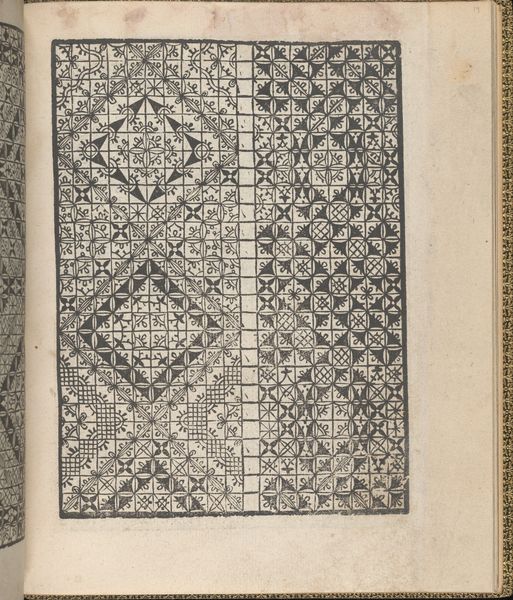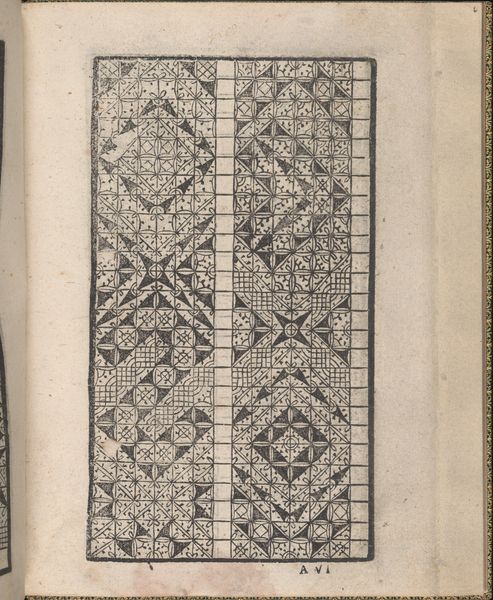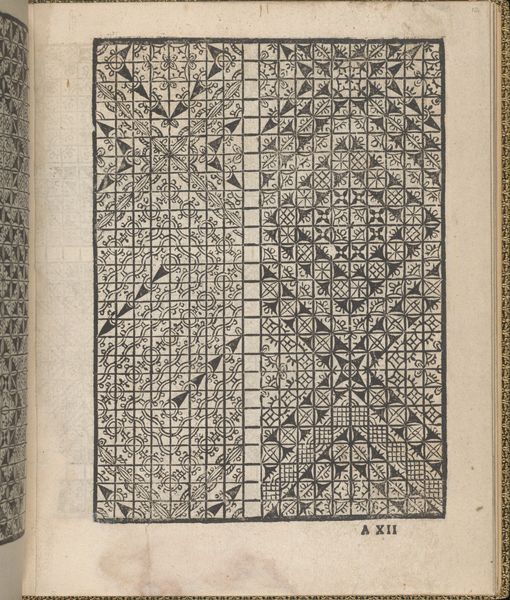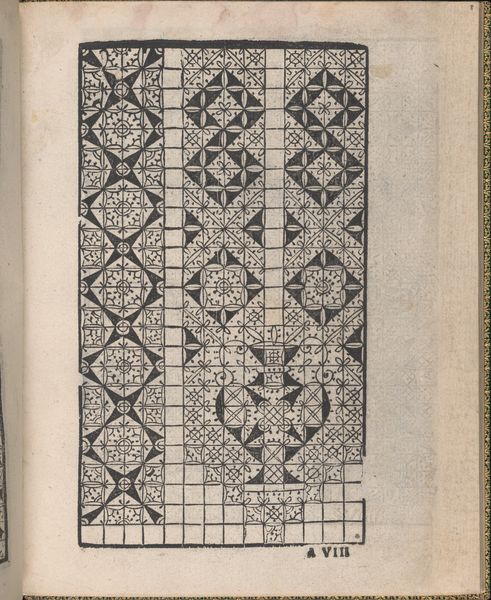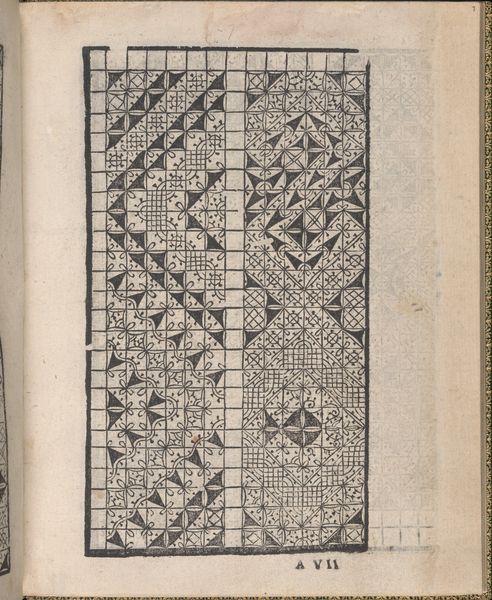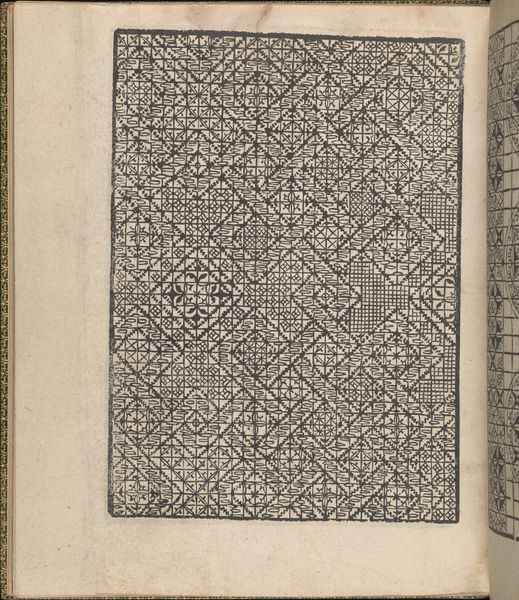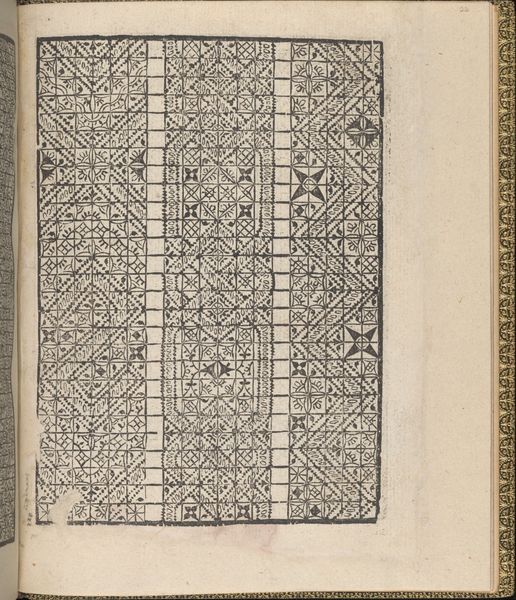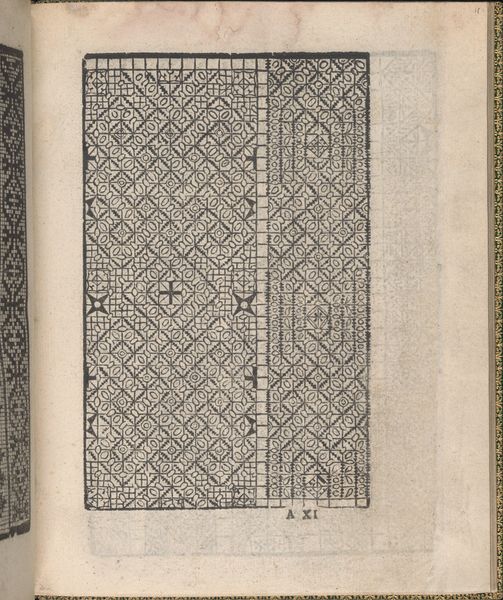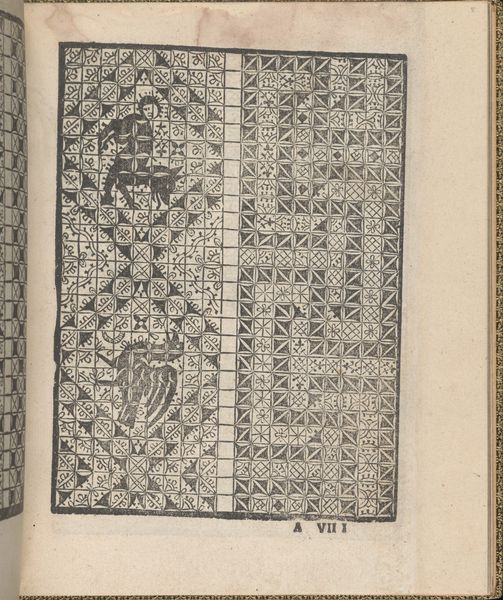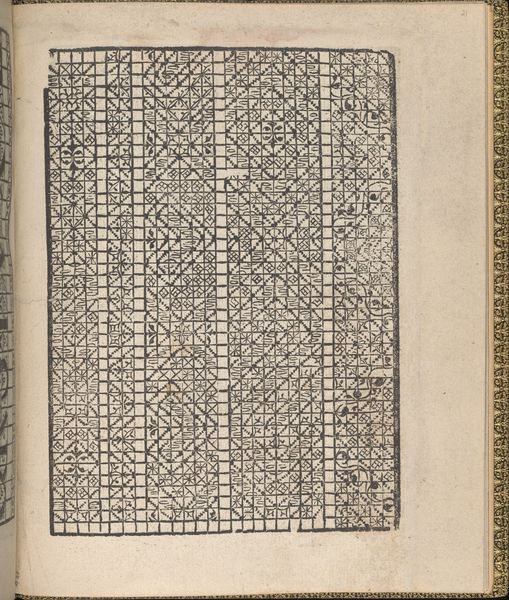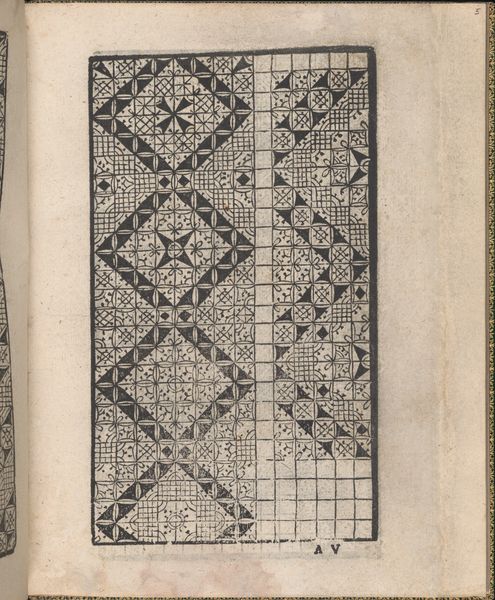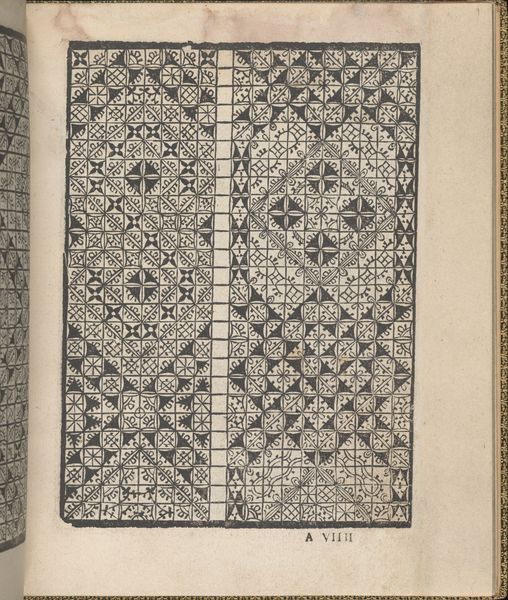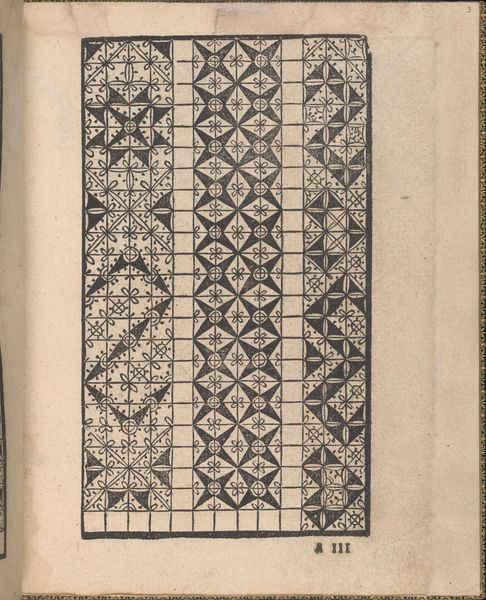
Giardineto novo di punti tagliati et gropposi per exercitio & ornamento delle donne (Venice 1554), page 4 (verso) 1554
0:00
0:00
drawing, print, paper, ink, engraving
#
drawing
# print
#
book
#
paper
#
11_renaissance
#
ink
#
geometric
#
decorative-art
#
engraving
Dimensions: 7-5/8 x 6-3/8 x 1/4 in. (19.4 x 16.2 x 0.6 cm)
Copyright: Public Domain
Curator: Here we have a page from Matteo Pagano's "Giardineto novo di punti tagliati et gropposi," printed in Venice in 1554. Editor: It's a dizzying array of geometric patterns! My first impression is of intricate order—but perhaps also a latent energy contained within the small, repeating forms. Curator: Exactly. These designs, rendered in ink on paper through engraving, were meant to guide women in the art of needlepoint and lace making. Think of them as early forms of accessible design education. Editor: So the patterns aren't merely decorative, they're functional diagrams. Yet the formal arrangement transcends pure utility. The balance, the precise execution… it has an undeniable aesthetic pull. The stark contrast of black ink on the off-white page creates a compelling tension. Curator: The book’s title translates roughly to "New Little Garden of Cut and Knotted Stitches." The "garden" isn’t just visual; it implies a cultivated, domestic space where women were actively engaged in artistic creation. These designs provided a framework for self-expression, within certain societal constraints. Editor: Note how each element interacts, lines build shapes, these forms in turn suggest structure. These building blocks are quite engaging when viewed with intent, as though to imply a message beyond their immediate purpose. Curator: Yes, and seeing them reproduced and displayed here grants insight into the social role these printed guides had. By offering a source of designs, needlepoint work was democratized as it found more widespread access and influence across regions and social spheres. Editor: Fascinating how something so practical can become imbued with layers of meaning when examined closely. It certainly invites a fresh look at something commonly considered decorative. Curator: I agree. Appreciating this printed page not only gives us a glimpse into 16th-century domestic life, but reminds us of art's capacity to exist and have significance even within practical instruction.
Comments
No comments
Be the first to comment and join the conversation on the ultimate creative platform.
